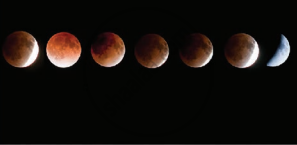Advertisements
Advertisements
Question
Explain in detail the Eratosthenes method of finding the radius of Earth.
Solution

Measuring the radius of the Earth
Eratosthenes observed that during noon time of summer solstice the Sun’s rays cast no shadow in the city Syne. It was located 500 miles away from Alexandria. On the same day and the same time, he found that in Alexandria the Sun’s rays made an angle of 7.2 degrees with local verticals as shown in the figure. He realized that this difference of 7.2 degrees was due to the curvature of the Earth.
The angle of 7.2 degrees is equivalent to `1/8` radians. So θ = `1/8` rad.
If S is the length of the arc between the cities of Syne and Alexandria, and if R is the radius of Earth, then,
S = Rθ = 500 miles
So, the radius of the Earth.
R = `500/θ` miles
R = 500 `"miles"/(1/8)`
R = 4000 miles
1 mile is equal to 1.609 km. So, he measured the radius of the Earth to be equal to R = 6436 km, which is amazingly close to the correct value of 6378 km.
APPEARS IN
RELATED QUESTIONS
Explain how Newton arrived at his law of gravitation from Kepler’s third law.
Explain how geocentric theory is replaced by heliocentric theory using the idea of retrograde motion of planets.
Describe the measurement of Earth’s shadow (umbra) radius during the total lunar eclipse
The following photographs are taken from the recent lunar eclipse which occurred on January 31, 2018. Is it possible to prove that Earth is a sphere from these photographs?

A student was asked a question ‘why are there summer and winter for us? He replied as ‘since Earth is orbiting in an elliptical orbit, when the Earth is very far away from the Sun (aphelion) there will be winter, when the Earth is nearer to the Sun (perihelion) there will be winter’. Is this answer correct? If not, what is the correct explanation for the occurrence of summer and winter?
The Moon Io orbits Jupiter once in 1.769 days. The orbital radius of the Moon Io is 421700 km. Calculate the mass of Jupiter?
